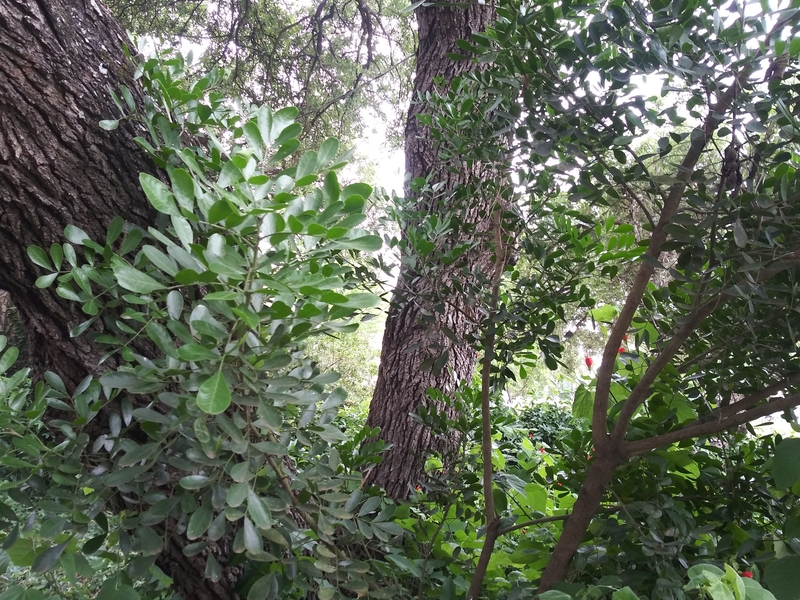By Rachel Cywinski
Life Member of Native Plant Society of Texas
Large trees across San Antonio uprooted and toppled, or shattered into pieces during unusual storms that brought winds at cross directions. Photos of the damage showed many trees that had root systems smaller than the tree canopy. This is not normal root development. Trees growing in urban areas often do not have adequate space for their roots to form, making them more susceptible to damage from inclement weather.
A Live Oak normally has tree roots extending four to five times the width of its canopy. Cypress trees have roots extending down into the rivers and up into the river bank for stability. Other trees may have smaller root systems but they also need at least as much space as the width of the tree canopy.
Space for tree roots extends beyond ground level. Local arborist David Vaughan says that there are no trees native to compacted urban soil. Soils on the city are usually so compacted that a growing tree may not get the water, air and nutrients it needs.
Once the tree roots begin to grow, other urban enemies of good tree health may prevent it from being healthy or living a long life. We all recognize that a bulldozer driven over a construction site will damage the soil where a tree might be planted. But routine activities after the tree is planted can often cause more damage to the tree than a bulldozer driven across the ground.
Planting grass under a tree will cause it to constantly struggle to get water and the right nutrients because the grass will soak up the water before it gets to the tree roots and the chemicals the grassroots give off into the soil are not the ones that the tree needs to grow. In nature, large trees and smaller plants that grow in the same habitat often grow well together.
In our area, Sophora secundiflora “Mountain laurel” often grows under Quercus virginiana “Live Oak” and so the Live Oak is referred to as a nurse tree for Mountain Laurel. The Live Oak absorbs the first inch of rainfall in its leaves and so the Mountain Laurel is not as susceptible to fungus that attacks it in overly-wet soil. The Live Oak provides shade and a more-humid atmosphere to the Mountain Laurel growing under its arching branches. The Live Oak drops its leaves and rapidly grows new ones just at the time of year when the Mountain Laurel blooms so that the understory Mountain Laurel gets full sun during the one time of year it needs it to flower and seed.
Utilizing these beautiful natural combinations of plants in our yards is healthier for the trees. It provides habitat for hummingbirds and butterflies and allows us to have a beautiful landscape without using any fertilizers or pesticides.
Going grass-free under trees prevents the other common routines that compact soil and harm tree roots, including using a lawn mower or leaf-blower and walking on the roots. One way to cause severe damage to a tree is to mow a lawn while it is still damp from the rain, as this forces soil particles so close together that tree roots begin to suffocate.
If you have compacted soil under your trees, adding compost will help rebuild the soil structure. Consider ways to protect the tree roots from damage caused by people, animals and lawn equipment that compact the soil.
The CPS Energy tree guide is a helpful tool to use for reference. It can be downloaded from the first of the “helpful links” on the bottom of this web page:
https://www.cpsenergy.com/content/corporate/en/my-home/savenow/rebates-rebate/green-shade-tree-rebate/tree-placement-and-energy-savings.html












